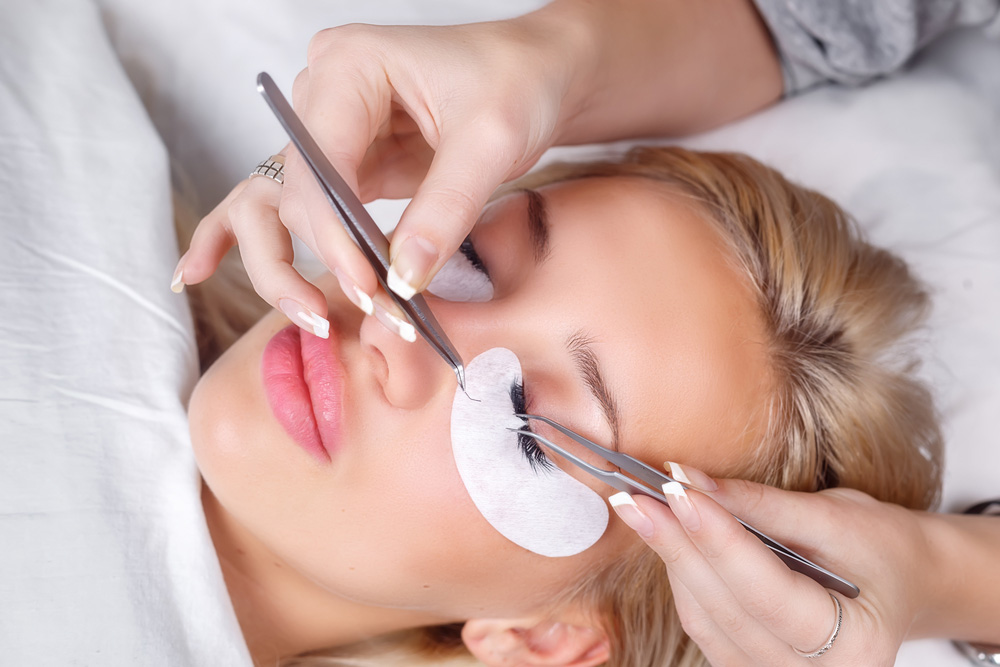 Below is a list of terms and references used throughout this course and their descriptions.
Below is a list of terms and references used throughout this course and their descriptions.
3M MICROPORE™ TAPE
High quality, general purpose, surgical/medical tape. Used with the collagen eye pads to secure lower lashes Gentle to the skin, allowing it to breathe, and easy to remove. Is non-irritating, latex-free and hypoallergenic. Adheres well. Ideal for clients with sensitive or fragile skin.
3M TRANSPORE™ TAPE
A gentle, transparent and water-proof tape with strong adhesion and easy bi-directional tear. Can be used on its own or with the collagen eye pads to keep lower lashes in place. Also allows the skin to breathe. Heavier than the 3M Micropore™ tape.
ACRYLIC/SYNTHETIC (LASHES)
Non-natural lashes that are more firm and sturdy than the mink/silk type. They are more obvious looking and hold their curl well. Due to their firmness, they don’t last as well on the natural lash.
AFTERCARE INSTRUCTIONS
Written and/or verbal guidelines to support and advise the client on the care of lash extensions following their application, such as gentle cleansing and avoiding oil-based face products.
ALLERGEN
Any substance, usually harmless, that causes an allergic reaction. For example, being allergic to the glue used to apply lash extensions, resulting in tenderness, swelling or itching around the eye area.
ASSESSMENT MODEL
The assessment process of determining the student’s knowledge and skills gained after training for lash extension application.
CARBON BLACK
One of the ingredients in most lash extension glues. It’s a dye, which makes the glue black or dark grey in colour, added to make the blending of the bonds of natural lashes and extensions less noticeable.
CARCINOGENIC
Having the potential (not always positively) to cause cancer.
CLEANSING PADS
These are specifically formulated to cleanse and remove stubborn oil from lashes and the eye area prior to the application of lash extensions. The lashes are prepared as much as possible without oil residue on the natural lashes, which improves bonding of the glue.
CLIENT ASSESSMENT
The process of assessing the client’s eye shape and natural lashes before the application of lash extensions, as well as understanding their expectation and needs.
CONJUNCTIVITIS
Inflammation of the eye’s conjunctiva (the mucous membrane covering the front of the eye and lining the inside of the eyelids).
CONSENT FORM
A document explaining the risks involved and possible unexpected outcomes in lash extension applications, in which the client has the option to sign before commencing the procedure to indicate their understanding and permission.
DOLPHIN NOSED TWEEZERS
Dolphin-shaped (or semi-curved), high precision tweezers used for the application of classic lash extensions.
ELLEEBANA ULTRA SUPER ADHESIVE
Glue that is quick-drying in 1-2 seconds, durable in different humidity, retention of 5-6 weeks and thin viscosity to reduce clumping. Low fumes and ISO approved. Available in 5ml/10ml size.
ETHEL CYANOACRYLATE
All lash extension glues are made ethel cyanoacrylate as a base to make the bonding of lash extensions last longer, curing (or hardening) with moisture in the air. Has a flexible hold and safe for sensitive skin.
EYE PADS
Dual-purpose, hydrogel eye pads that firmly hold the lower lashes in place during lash extension application as well as containing collagen for a rejuvenating skin treatment under the eye area.
FDA (FOOD & DRUG ADMINISTRATION)
An agency based in the United States, responsible for protecting and promoting public health through the control and supervision of cosmetics, etc.
FLUSH (LASHES)
Lashes that sit completely level and evenly on the eyelid.
INFILLS
Lashes used to fill spaces where the client’s own natural lashes have fallen out, used to maintain a full look.
ISOPROPYL ALCOHOL 98%+
A clear, colourless, flammable liquid used in lash extension applications to make the glue dry faster and last longer.
LASH CYCLE
The growth and falling out of lashes, lasting from 60-90 days. When a natural lash matures and falls out, a new lash has already been growing and quickly replaces the fallen lash.
LASH LINE
The edge of the upper or lower eyelid from which the lashes grow.
LINT-FREE WANDS
Used to apply solutions, primer and remover during the application of lash extensions.
MINK (LASHES)
Lashes that are very fine, soft and silky, just like real mink fur or natural lashes. Because they are lightweight and highly defined, they are considered a better option for lashes if the natural ones are weak or fine.
OH&S
Occupational Health & Safety, relating to the health, safety and welfare issues in the workplace.
POLY METHYL METHACRYLATE
A semi-permanent filler for augmentation (more commonly used to treat wrinkles, folds, and furrows).
PRIMER
A must for any Lash Technician to ensure optimum bonding of glues. They effectively cleanse lashes of residual oils, sebum and build-up of make-up remover, thus extending the life of lash extensions.
PROTEIN
Hardened secretion found in the corners of the eyes after sleep.
REFILL
See ‘Infill’.
REMOVER
For easy removal (or dissolving) of glues without compromising the health of lashes. Usually used with the client in a sitting position so it doesn’t seep into the eyes.
SALINE SOLUTION
Water containing sodium chloride for medicinal use, such as cleansing and moistening dry eyes.
SEBUM
Oils excreted by small glands in the skin into hair follicles to lubricate the skin and hair.
SILK (LASHES)
Finer and more flexible lashes than the synthetic type. They are softer and more porous so tend to hold on for slightly longer. Because of their lighter weight, they are considered a better option for lashes if the natural ones are weak or fine.
